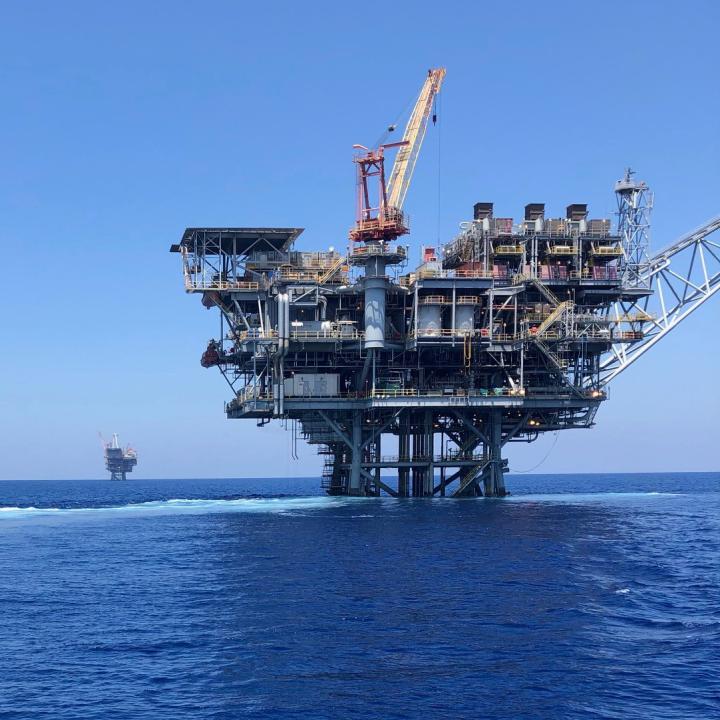
- Policy Analysis
- Policy Alert
Israeli Offshore Gas Platform Near Gaza Resumes Production

The post-attack shutdown of the Tamar gas field had highlighted the vulnerability of Israel’s energy infrastructure.
On November 9, Israel’s Ministry of Energy instructed Chevron to resume production at the Tamar gas field after having ordered the field’s operator to halt production on October 7, following Hamas’s attack against Israel.
The Tamar platform stands in water more than five hundred feet deep about thirteen miles off the Israeli coast south of the city of Ashkelon—and a similar distance from Gaza. The installation provides initial processing of gas from the Tamar offshore field much further north, about seventy miles offshore of the northern Haifa port. From the platform, the gas is piped to shore just north of the Port of Ashdod for further processing before entering Israel’s gas trunk pipeline system.
The Tamar platform and nearby Mari-B platform, the latter of which is no longer operating, are both vulnerable to rocket fire from Gaza as well as seaborne assault, so even in normal times they are protected by heavily armed security personnel and patrolling high-speed boats. Additionally, larger naval craft equipped with the anti-rocket Iron Dome system can be quickly deployed from their base in Ashdod.
These days, most of Israel’s domestic gas demand is met by the offshore Leviathan field, which lies west of the Tamar field. Leviathan gas is piped to a larger platform standing five or so miles off the northern city of Hadera, where tall chimneys from its power station have for years demonstrated Israel’s previous reliance on imported (and environmentally dirty) coal for electricity generation. Leviathan gas also supplies much of neighboring Jordan’s electricity demand.
The impact of the Tamar gas cutoff was not officially explained but likely affected several industrial plants with supply contracts, including two Jordanian facilities at the southern end of the Dead Sea used to recover potash and other minerals. But the main impact would have been on exports to Egypt, where Israeli gas helps meet the country’s apparently insatiable domestic demand for electricity. Supply volumes have now reportedly recovered but are still less than pre–October 7 volumes.
Some of the Egypt-bound gas appears to be flowing via Jordan to its southern Port of Aqaba, from where it is piped the short distance on the seabed to Egypt, then northward to al-Arish on Sinai’s Mediterranean coast. Previously, the gas would have flowed through the much shorter East Mediterranean Gas (EMG) pipeline on the seabed from Israel to al-Arish. It appears that this pipeline, running parallel to the Gaza coast, has reopened.
While redundancy in Israel’s gas infrastructure diminished the impact of the Tamar shutdown, the country’s vulnerability remains high. Amid continuing tensions on the northern border with Lebanon, the danger persists that despite the 2022 Israel-Lebanon maritime border agreement, Hezbollah could threaten the Leviathan platform or the activities of the floating gas recovery installation operating in the northern Karish offshore field.
Tamar’s return to production will reestablish the revenue flow for the companies owning the license, particularly Chevron, as well as tax revenue for the Israeli government. That will also be good news for the companies—among them BP and the State Oil Company of the Republic of Azerbaijan—that were awarded licenses on October 30 to explore for gas off Israel’s coast.
Simon Henderson is the Baker Fellow and director of the Bernstein Program on Gulf and Energy Policy at The Washington Institute.



